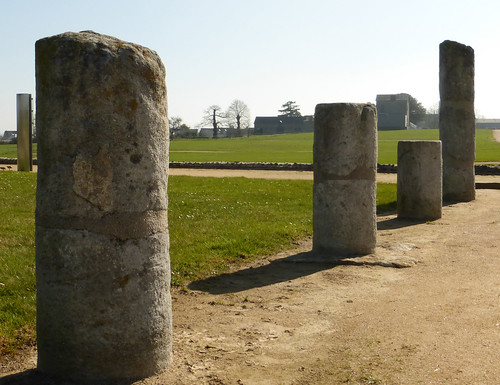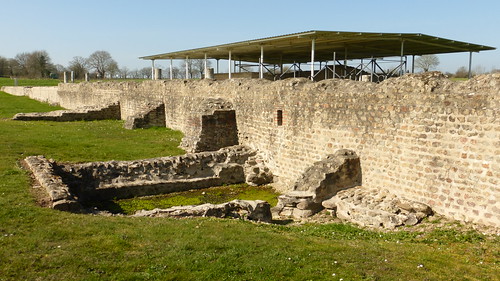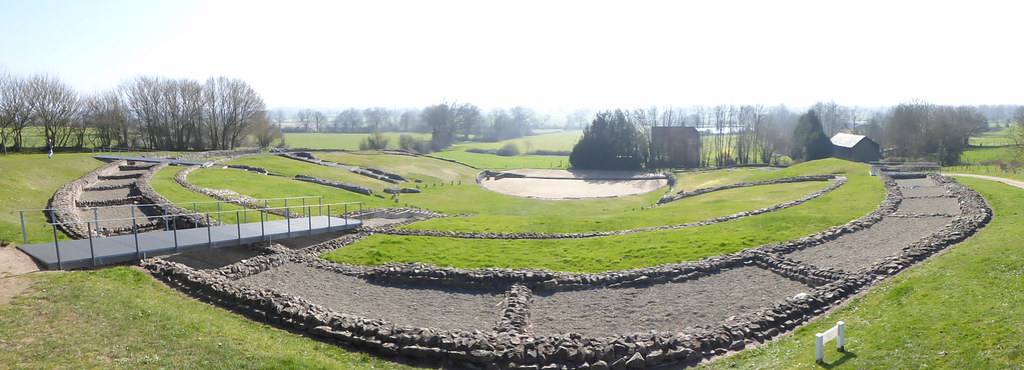 There was originally an important Gaulish sanctuary on the archaeological site of Jublains. Following the conquest of Gaul by Julius Caesar, the Romans divided the country into districts and built towns which correspond to the present administrative centers. The district of Aulerques Diablintes was named after the local Gaulish people and the town of Noviodunum was built at an ancient crossroads.
There was originally an important Gaulish sanctuary on the archaeological site of Jublains. Following the conquest of Gaul by Julius Caesar, the Romans divided the country into districts and built towns which correspond to the present administrative centers. The district of Aulerques Diablintes was named after the local Gaulish people and the town of Noviodunum was built at an ancient crossroads.  The main buildings have already been uncovered and can be visited: the baths which were discovered during the restoration of the church, the ruins of Jublains Roman Fort, the temple and the theatre are the best local remains of the Gallo-Roman period in the region.
The main buildings have already been uncovered and can be visited: the baths which were discovered during the restoration of the church, the ruins of Jublains Roman Fort, the temple and the theatre are the best local remains of the Gallo-Roman period in the region. 

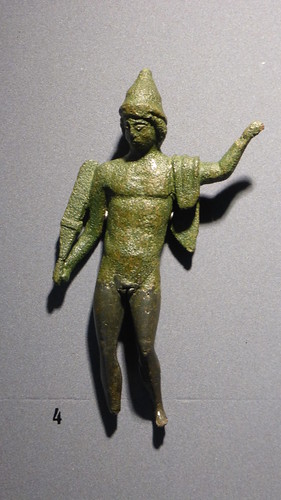
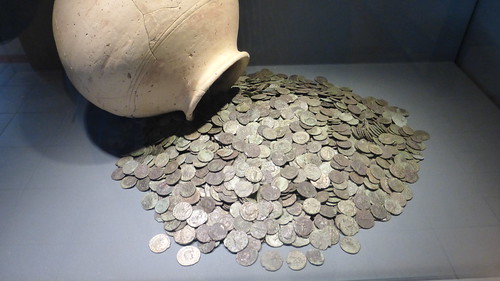 At the entrance to the fortress is the Departmental Museum of Archaeology. This museum offers an introduction to the different sites and main archaeological themes of the Mayenne region, in particular the development of the Roman town of Jublains and the medieval pottery in the Laval region. The site of Jublains is dealt with in more detail with the help of an audio-visual presentation and several large models which give a good idea of what it looked like in ancient times.
At the entrance to the fortress is the Departmental Museum of Archaeology. This museum offers an introduction to the different sites and main archaeological themes of the Mayenne region, in particular the development of the Roman town of Jublains and the medieval pottery in the Laval region. The site of Jublains is dealt with in more detail with the help of an audio-visual presentation and several large models which give a good idea of what it looked like in ancient times. 

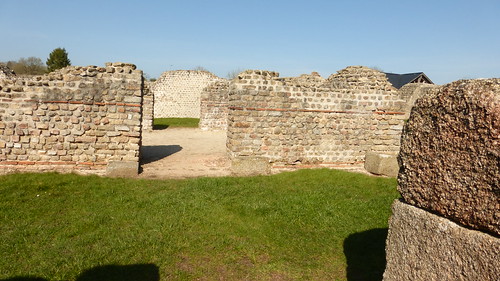
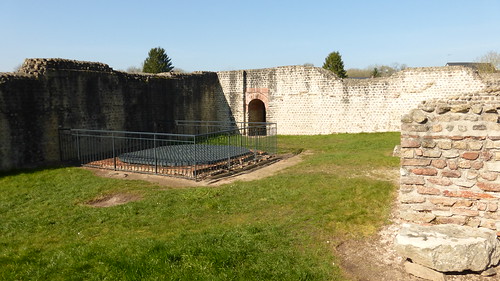 The Gallo-Roman fortress consists of three concentric parts. The central building, the oldest part of the fortress dating from the early 3rd century, is a massive rectangular storehouse with four angle towers. It is lit by means of a central courtyard and is equipped with several wells and water tanks. The gates and the external wall coverings are made of squared blocks.
The Gallo-Roman fortress consists of three concentric parts. The central building, the oldest part of the fortress dating from the early 3rd century, is a massive rectangular storehouse with four angle towers. It is lit by means of a central courtyard and is equipped with several wells and water tanks. The gates and the external wall coverings are made of squared blocks. 
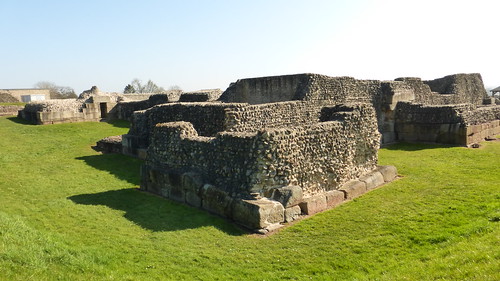
 The two small buildings in the north and south angles were bathhouses. During the crisis which shook the Roman Empire at the end of the 3rd century (invasions, military anarchy, peasant rebellions…), the storehouse was surrounded by a rampart of raised earth and a moat. This moat was later filled in to enable the construction of fortified walls around AD 290, just before the whole site was abandoned.
The two small buildings in the north and south angles were bathhouses. During the crisis which shook the Roman Empire at the end of the 3rd century (invasions, military anarchy, peasant rebellions…), the storehouse was surrounded by a rampart of raised earth and a moat. This moat was later filled in to enable the construction of fortified walls around AD 290, just before the whole site was abandoned. 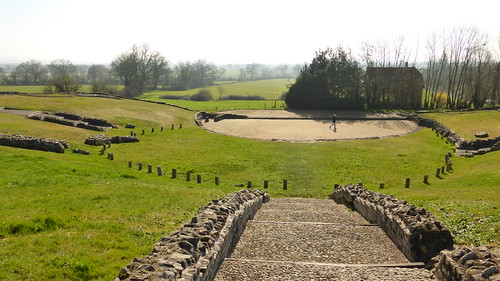
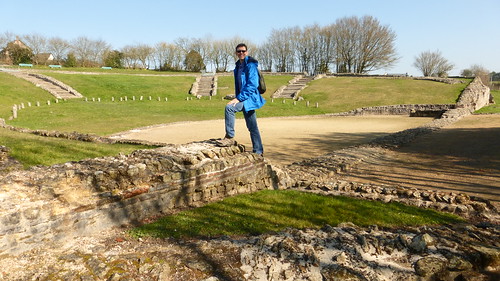
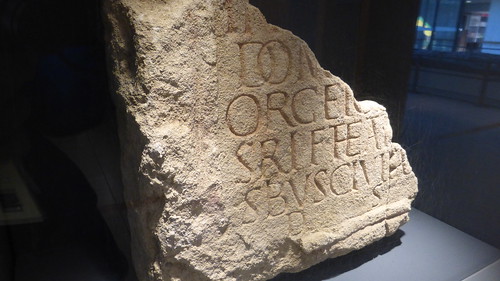 The theatre is on the southern side of the plateau on which the town stretched out. It thus benefits from a natural slope. An inscription, exhibited in the museum revealed that this theatre was offered to the town by a person: Orgétorix, surely a rich Diablinte, member of the Decurion order, who ruled the city. With its elliptic shape, Orgétorix’s theatre distinguishes itself from the classical Roman models, notably by the lack of a stage wall, replaced by a small semi-circular building.
The theatre is on the southern side of the plateau on which the town stretched out. It thus benefits from a natural slope. An inscription, exhibited in the museum revealed that this theatre was offered to the town by a person: Orgétorix, surely a rich Diablinte, member of the Decurion order, who ruled the city. With its elliptic shape, Orgétorix’s theatre distinguishes itself from the classical Roman models, notably by the lack of a stage wall, replaced by a small semi-circular building. 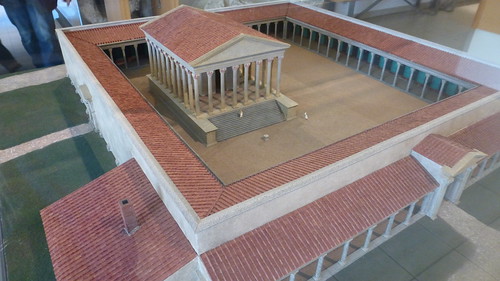
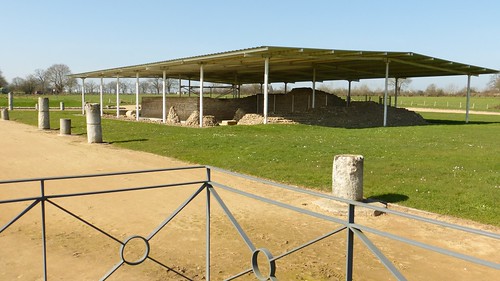 The temple is situated at the other end of the Roman town. A number of weapons offered as gifts were found on the site of the Gaulish sanctuary which was rebuilt under Nero in AD 65; its proportions were vast (each side being about 80m long) and limestone was brought especially from the Loire region. A covered canal carried rain water to a heated pool situated on the outside of the temple and served as the building for ablutions.
The temple is situated at the other end of the Roman town. A number of weapons offered as gifts were found on the site of the Gaulish sanctuary which was rebuilt under Nero in AD 65; its proportions were vast (each side being about 80m long) and limestone was brought especially from the Loire region. A covered canal carried rain water to a heated pool situated on the outside of the temple and served as the building for ablutions.